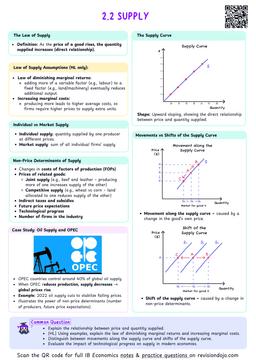Income Elasticity of Demand
A measure of the responsiveness of demand for changes in income.
Importance of YED for Firms
When there is economic growth, society's income increases leading to a higher demand for goods and services. As we saw in the previous section:
- Demand for goods with a YED less than 1 grows at a smaller rate than income (income inelastic demand).
The goods that have income inelastic demand are:
- Utilities
- Basic food
- Public transportation
Their incomes, as it increases, will become more aligned to expenditure on luxury goods.
- Demand for goods with a YED higher than 1 grows at a higher rate than income (income elastic demand).
The goods that have income elastic demand are:
- Fine Dining (Restaurants)
- Luxury Cars
- High-end technologies
- Vacations
- Therefore, industries with goods and services that are income elastic in demand would expand faster than total income in the economy.
- Those with income inelastic demand would expand slower comparatively.
- This also means that if an economy is facing recession, then goods and services that are income elastic in demand would be most affected negatively.
Hence, firms willing to expand may decide to sell goods and services with high income elasticity, though these come with higher risks as well.
Importance of YED in explaining changes in Sectoral Structure of the Economy
All economies have three sectors:
- Primary Sector (primary commodities)
- Manufacturing Sector (manufactured products)
- Tertiary/Service Sector (services such as education, healthcare, entertainment etc.)
Primary Commodities
Goods and services that directly come from natural resources or using the factor of production called land.
These different sectors have goods and services with different elasticities of income causing them to grow at different rates.
Primary Sector
The primary sector tends to have a low YED (2.5.5). Therefore:
- As incomes rise, the demand for these goods does not grow significantly.
- This limited demand growth indicates why the primary sector’s contribution to GDP and employment declines as economies develop.
Therefore, it is often observed that less developed economies tend to have a higher share of employment and GDP from the primary sector while developed ones have a low proportion.
As a result, firms in the primary sector often face challenges in sustaining revenue growth over time.


